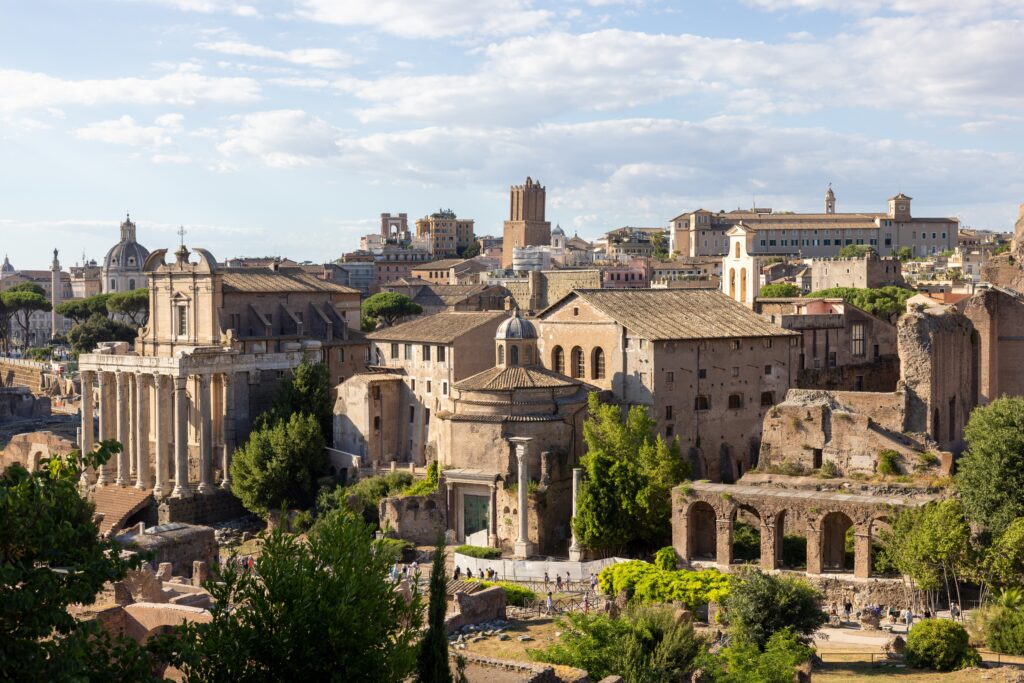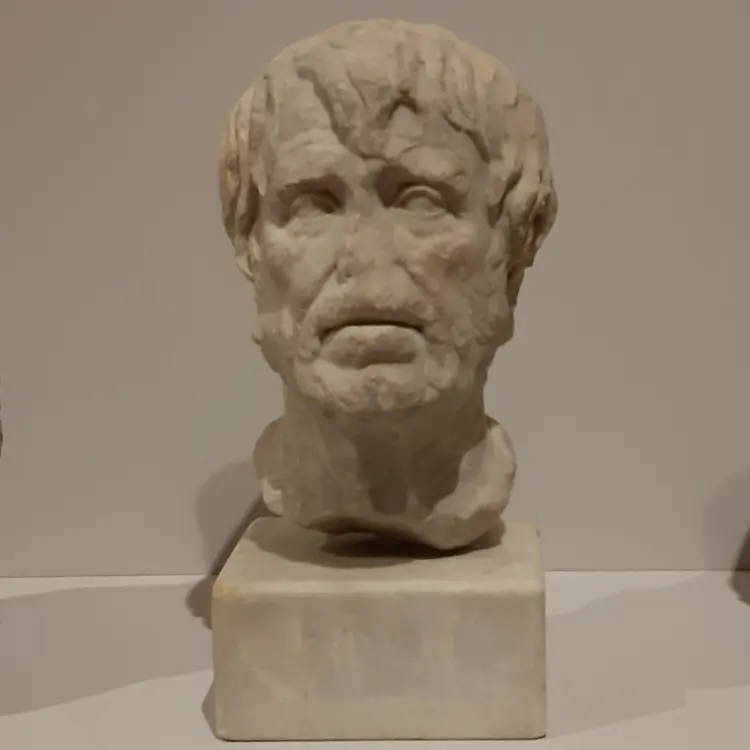
Lucius Annaeus Seneca the Younger was born in what is now Cordoba, Spain, around 4 BC, into a wealthy family. They belonged to the equestrians, the knights. One rank below the senators, the highest level of social status in the Roman empire at the time. But during his life, Seneca would work his way up to the highest steps, on par, some could say, with the emperor. His life would be filled with intrigue and drama, making him one of the wealthiest people alive. But what we know him for now, are his beautiful words. His philosophical essays and letters are the likes we haven’t seen before. But who was he? A Stoic philosopher or a career-driven sophist?
Seneca’s family appears in the history books as well. His Father Manuel Annaeus Seneca was also born in Spain, but of Italian descent, and a well-known rhetorician. We know of Helvia, Seneca’s mother, in part through a consolation letter he wrote to her during his exile in Corsica. His older brother, Annaeus Novatus, later Junius Gallio, served as pro-consul in Achaia, where he met the apostle Paul. The New Testament mentions this encounter where Junius Gallio sets St. Paul free. His younger brother Annaeus Mela lived a more obscure life. But his son Lucan was a poet whose epic on the civil war has survived.
The start of public life
Seneca went to Rome at an early age for his education, which included philosophy. But he suffered from respiratory illnesses. In one of his letters to Lucilius he describes something that could be asthma. To reduce the effect of these ailments, he moves to Egypt for its more favorable climate. In 31 AD he returned to Rome to pursue his political career. This is where his encounters with the infamous emperors, who would reign during life, begin.
First of those was Gaius Caligula, an emperor now best described as crazy and megalomaniac. In 39 AD, when he was a high-ranking financial clerk, he sparked the jealousy of Caligula. According to historian Cassius Dio, the emperor felt threatened by Seneca’s oratory skills. That’s why our philosopher was ordered to commit suicide. He only escaped this sentence because someone close to Caligula pointed out his bad health and that this would take care of it for him.
Claudius and Agripinna

Caligula’s successor, Claudius, wasn’t a big fan either. He accused Seneca of having committed adultery with his niece Julia Livillia, which led him to be exiled to Corsica. He stayed there for 8 years and did a lot of his writing. This was a time of his life when things seemed to be going south for Seneca. He lost half of his estate because of it, but moreover, he had lost his only son at the same moment. That would be the only child he and his wife, Pompeia Paulina, would have.
It was Caligula’s sister, Agrippina the Younger, who would have Claudius recall Seneca from that desolate rock. She was at the heart of all the intrigues in the courts of Rome at the time. Being a direct descendant of Augustus, she married Claudius to stay close to the throne. This also led her son, Lucius Domitius, to be adopted by her new husband. His name was then changed to Nero Claudius. She needed a great tutor for him, to make sure that her son would be the primary choice to succeed the emperor. Claudius also had a son, Britannicus, but he was about 3 years younger than Nero.
Seneca the Tutor
Aggripina figured the best person to help prepare her son to be the emperor, was Seneca. Thus Seneca returned to Rome and became the tutor of this young man. When Nero became emperor before the age of 17, Seneca moved into the role of senior advisor. He did this together with the head of the Praetorian Guard, Sextus Afranius Burrus. During the first five years, it was said that the empire was run by these two advisors. But Nero would show what was to come.
As Britannicus came to the age where he could also ascend to the throne, Nero had him poisoned. How much of this did Seneca know and was he able to stop him? When Nero killed his mother Agrippina, in 59 AD, things started to change and Seneca and Burrus started to fall out of favor. Burrus died in 62 AD and Seneca tried to retire from public life. He was willing to give up all his wealth, but Nero wouldn’t accept it. It would have made Seneca into a hero while turning the emperor into a weak figure. He did retreat and moved out of the spotlight. During these years he started to focus more on philosophy and his writings.
Who was the real Seneca?

Seneca’s writing is one of the most extensive sources of Stoic content that has survived. We have a lot of texts, letters, and plays for us to read. In these letters and essays, he shows how great of a writer he was. His wordplay is exquisite and he gives us a lot of great quotes to use as we bring Stoicism into the 21st century. But the question remains, who was Seneca? Was he this strict Stoic Philosopher who made sure the emperor was as good as he could be? Or was he a great wordsmith who relished power and wealth? The verdict isn’t out, as you can read in the book: Dying Every Day; Seneca at the Court of Nero.
The best representation of this split opinion on Seneca is two busts that are believed to be him. One is of a slim man, with a full head of hair, a bit rough-looking. And the other is of a heavy-set bald man, an aristocratic-looking figure. This last bust was a doubled-headed one, with Seneca on one side and Socrates on the other. It had Seneca’s name engraved on his chest. Who he was is something we can leave up to you and what value you get out of his texts. But there is no doubt about the fact that his surviving writings provide us with a treasure of wisdom.
Seneca’s writings
During his life, he wrote a lot and between 62 AD and 65 AD, he wrote all his letters to a native from Pompeii, Lucilius Junior. Although there are no known replies, we can see Seneca trying to build a legacy in these letters. Sharing his wisdom and hoping to inspire this young man to lead a good life. The life that he would have liked to have lived. Many great essays survive, such as a few consolation letters, some on Anger, the Happy Life, the Tranquil Mind, Mercy, and many more. He also wrote plays and a book on Nature.
The impact of these texts can still be felt today. Throughout the centuries after Seneca, influential people used his texts to their benefit. We can see his words echo in Christianity and in modern-day writings. He managed to leave an extensive legacy in that sense. Because these texts still remain a great source of information about the life at the time, the historical references, and the philosophy of Stoicism.
Seneca’s death

How fitting to the life that Seneca lived to have it end at the hand of his former pupil. In 65 AD Nero ordered Seneca to commit suicide for the supposed involvement in a plot to kill the emperor. This same event also cost his brothers and his nephew their lives, as they were also close to Nero at the time. Seneca prepared for this moment in good Stoic fashion. He had some hemlock available to him during his last years. In honor of the final moments of Socrates’s life. But comparing the execution between the ancient sage and Seneca, his was quite the ordeal.
How it went down has been documented, but it wasn’t the quick and smooth procedure he would have hoped for. Cutting his veins didn’t help, because the blood wouldn’t flow. He then went into a hot bad, which didn’t help either. Finally, he took the hemlock, but he was so weak this wasn’t able to take effect. Whether it was the steam of the hot bad that suffocated him, or all the prior measures needing time, he finally met his destiny. His wife wanted to show solidarity and tried to go the same way, but she was saved and lived on for quite some years.
The connection to the now
Whatever your opinion of Seneca as a person is and if it is ever possible to paint the true picture. When we look at it through a Stoic lens, we know what we have now. His thoughts live on and we have the opportunity to learn from them. If you haven’t done so already, go out and read some of his letters and essays. They will have an impact on how you see the world, life, and society. But what it does show is how little human behavior has changed during these centuries. Which makes our need for someone like Seneca even greater.
Continue to read more about other Stoic philosophers like Marcus Aurelius, Epictetus, and Michel de Montaigne. For some of Seneca’s most famous quotes, go to this page: Seneca Quotes. If you want to know more about what Via Stoica has to offer, you can find out more about our coaching programs here. Or sign up for the newsletter below to stay up to date on the latest news and events.



0 Comments